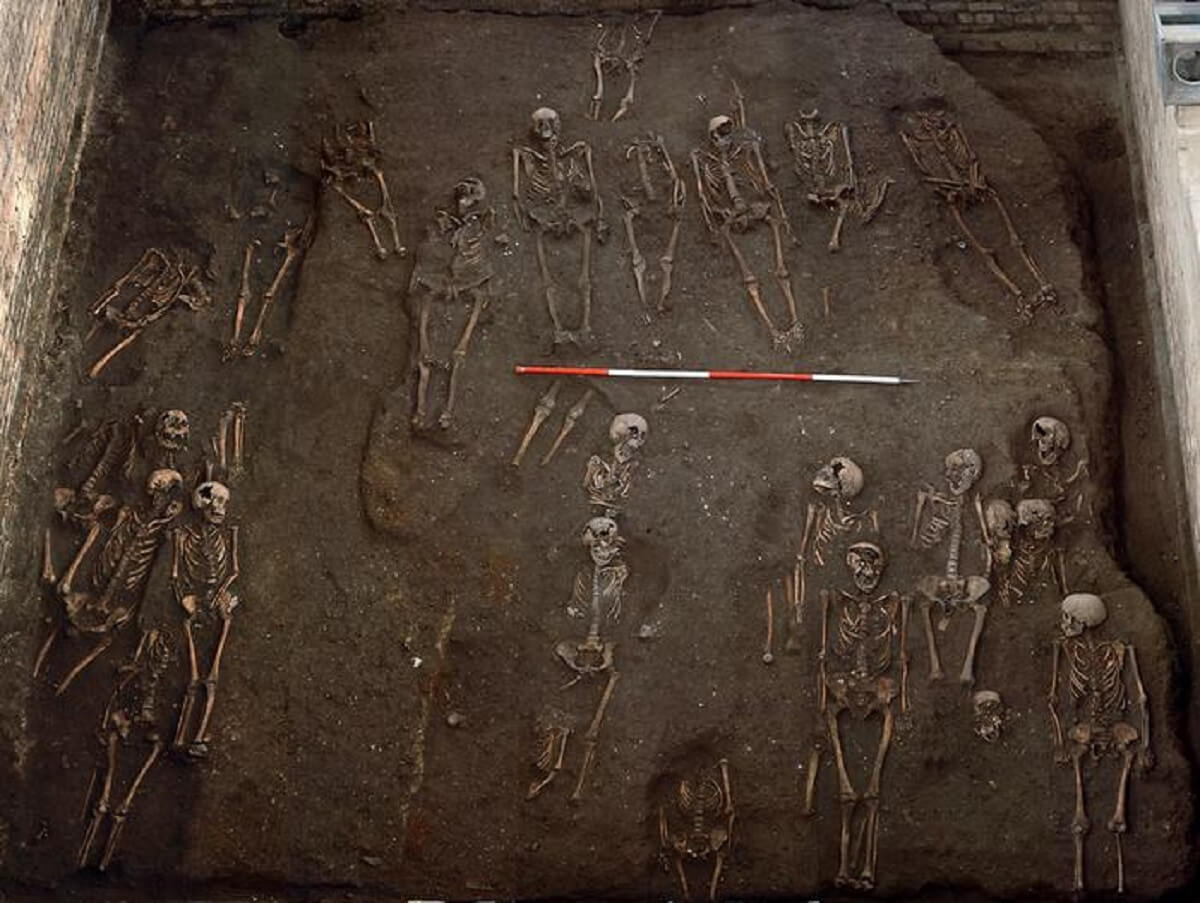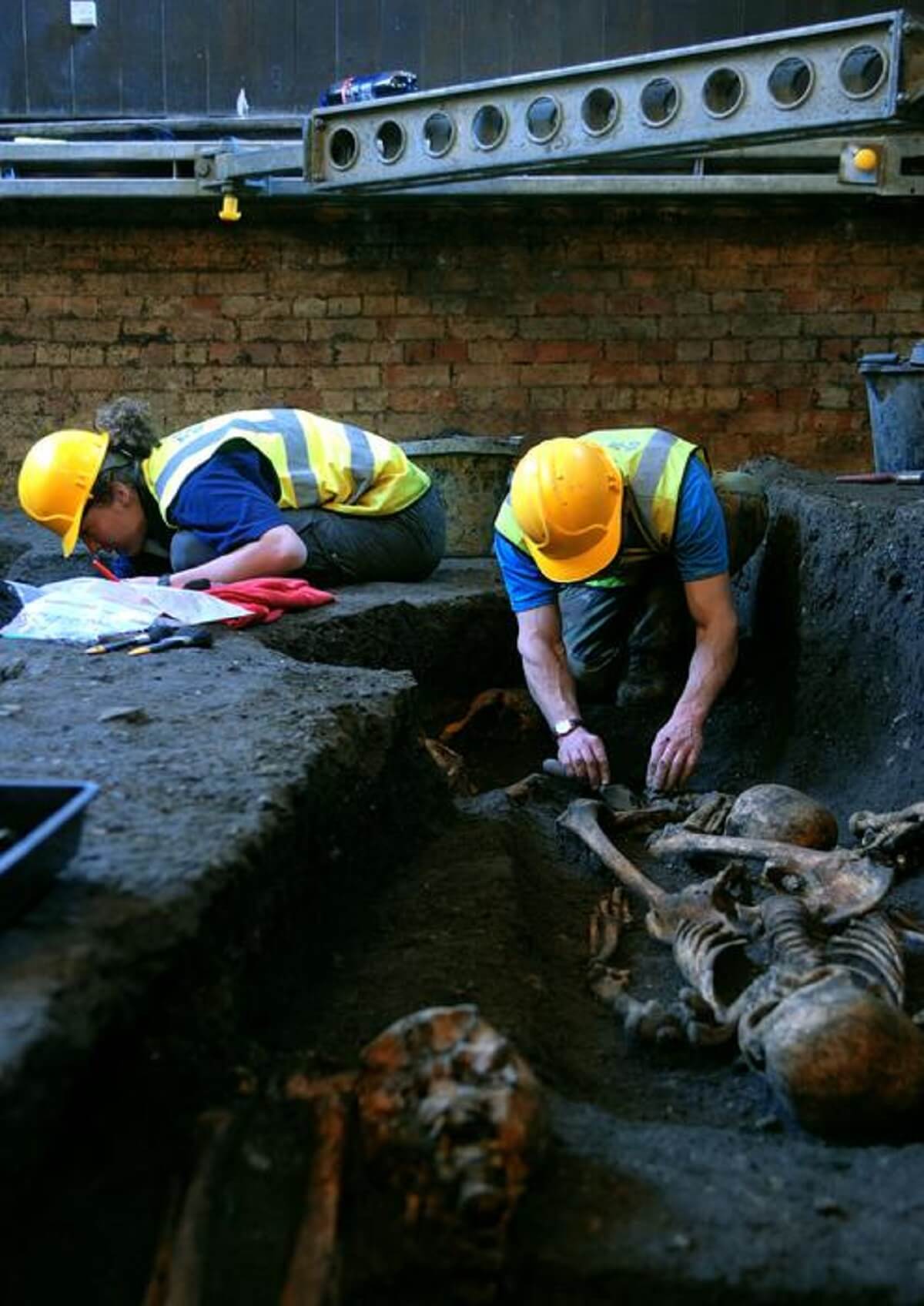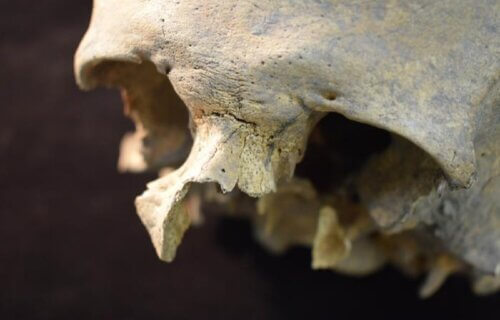CAMBRIDGE, United Kingdom — A collection of “bone biographies” is shedding light on the lives of medieval residents of present-day Cambridge in the United Kingdom. Through their skeletons, scientists are piecing together detailed accounts of everyday life during the era of the Black Death and its aftermath.
The research, led by University of Cambridge archaeologists, involved analyzing nearly 500 skeletal remains dating from the 11th to 15th centuries, excavated from various burial grounds in the city. These remains, including those from a former hospital that served the poor and infirm, provide stark evidence of the pervasive poverty during the plague.
“An osteobiography uses all available evidence to reconstruct an ancient person’s life,” says lead researcher Professor John Robb from the Cambridge’s Department of Archaeology, in a university release. “Our team used techniques familiar from studies such as Richard III’s skeleton, but this time to reveal details of unknown lives – people we would never learn about in any other way.”
The analysis included a diverse range of individuals, from townsfolk and scholars to friars and merchants, using modern techniques to investigate their diets, DNA, activities, and bodily traumas.

“The importance of using osteobiography on ordinary folk rather than elites, who are documented in historical sources, is that they represent the majority of the population but are those that we know least about,” says researcher Dr. Sarah Inskip, now at the University of Leicester.
To personalize the study, the team assigned pseudonyms to the subjects, drawing on statistical analysis of names from the period’s written records.
“Journalists report anonymous sources using fictitious names. Death and time ensure anonymity for our sources, but we wanted them to feel relatable,” Prof. Robb adds.
The study’s subjects include ‘Wat’ (No. 92), a man who survived the plague and later died of cancer in a charitable hospital; ‘Anne’ (No. 335), who endured repeated injuries and a shortened right leg; ‘Edmund’ (No. 730), a leprosy sufferer who lived among the general populace; and ‘Eudes’ (No. 522), a friar with a strong diet who lived a long life despite suffering from gout.
The research findings, which are part of the university’s “After the Plague” project, are now available online. The study focuses on the inhabitants of the St. John the Evangelist hospital, founded around 1195. This hospital, which was excavated in 2010, catered to the “poor and infirm” for about 300 years before being replaced by St. John’s College in 1511.
“Like all medieval towns, Cambridge was a sea of need,” Prof. Robb says. “A few of the luckier poor people got bed and board in the hospital for life. Selection criteria would have been a mix of material want, local politics, and spiritual merit.”

Analysis of over 400 remains from the hospital’s main cemetery revealed that the inmates were generally an inch shorter than the average townsfolk, often died younger, and showed signs of tuberculosis and childhood malnutrition. However, they had lower rates of bodily trauma, suggesting a life somewhat sheltered from physical hardship.
The study also identified some skeletons as likely early university scholars, based on the symmetry of their arm bones, indicating a lack of manual labor.
“Yes, the Black Death killed half the population in one year, but it wasn’t present in England before that, or in most years after that. The biggest threats to life in medieval England, and in Western Europe as a whole, were chronic infectious diseases such as tuberculosis,” Prof. Robb concludes.
The research is published in the journal Antiquity.
You might also be interested in:
- Down bedding of the elite discovered in burial ground from the Iron Age
- Medieval stunner: Archaeologists unearth 400-year-old body with an iron hand
- Medieval hit-and-run? Skeleton of friar with two broken legs resembles modern day car accident victim
South West News Service writer Stephen Beech contributed to this report.
